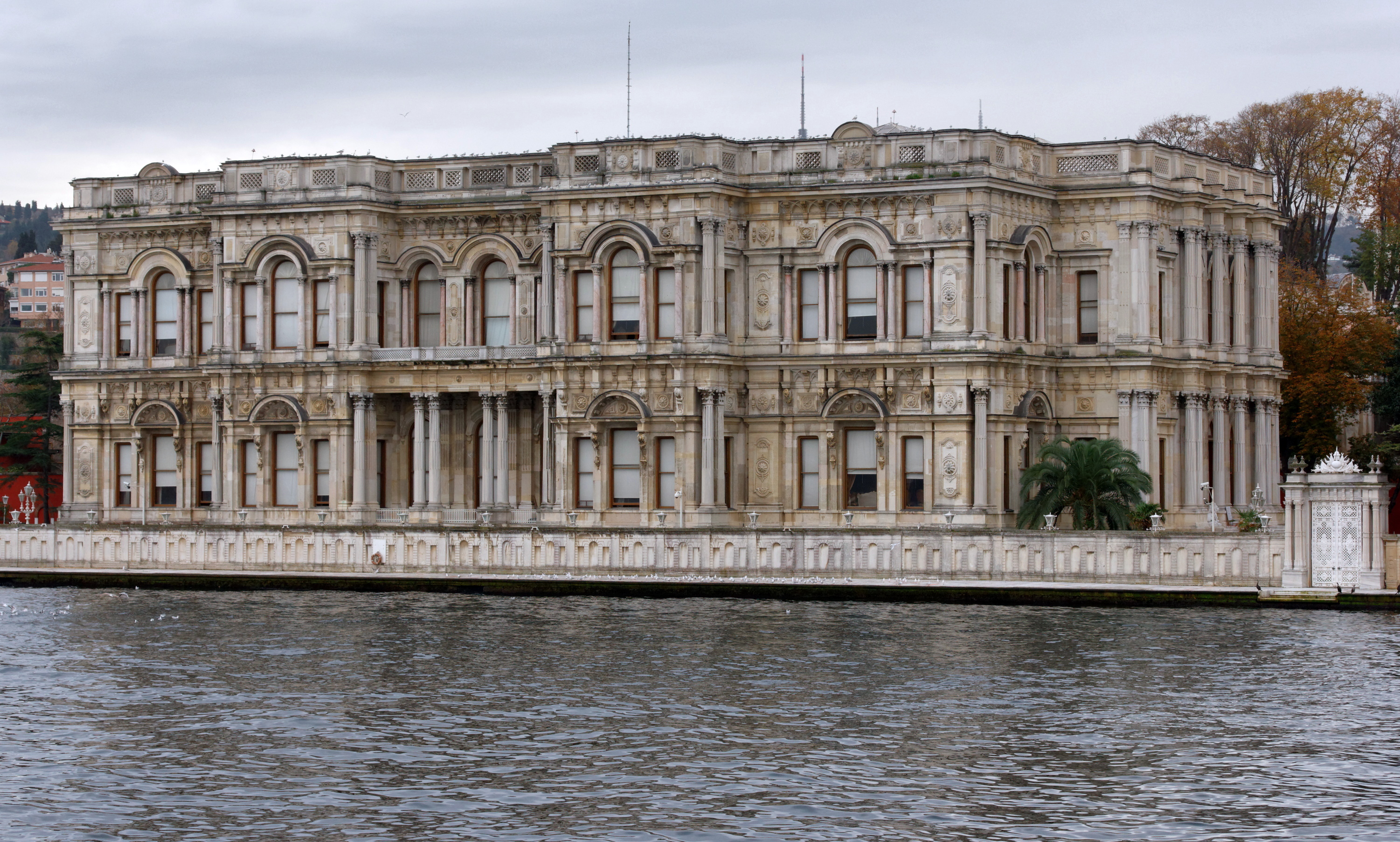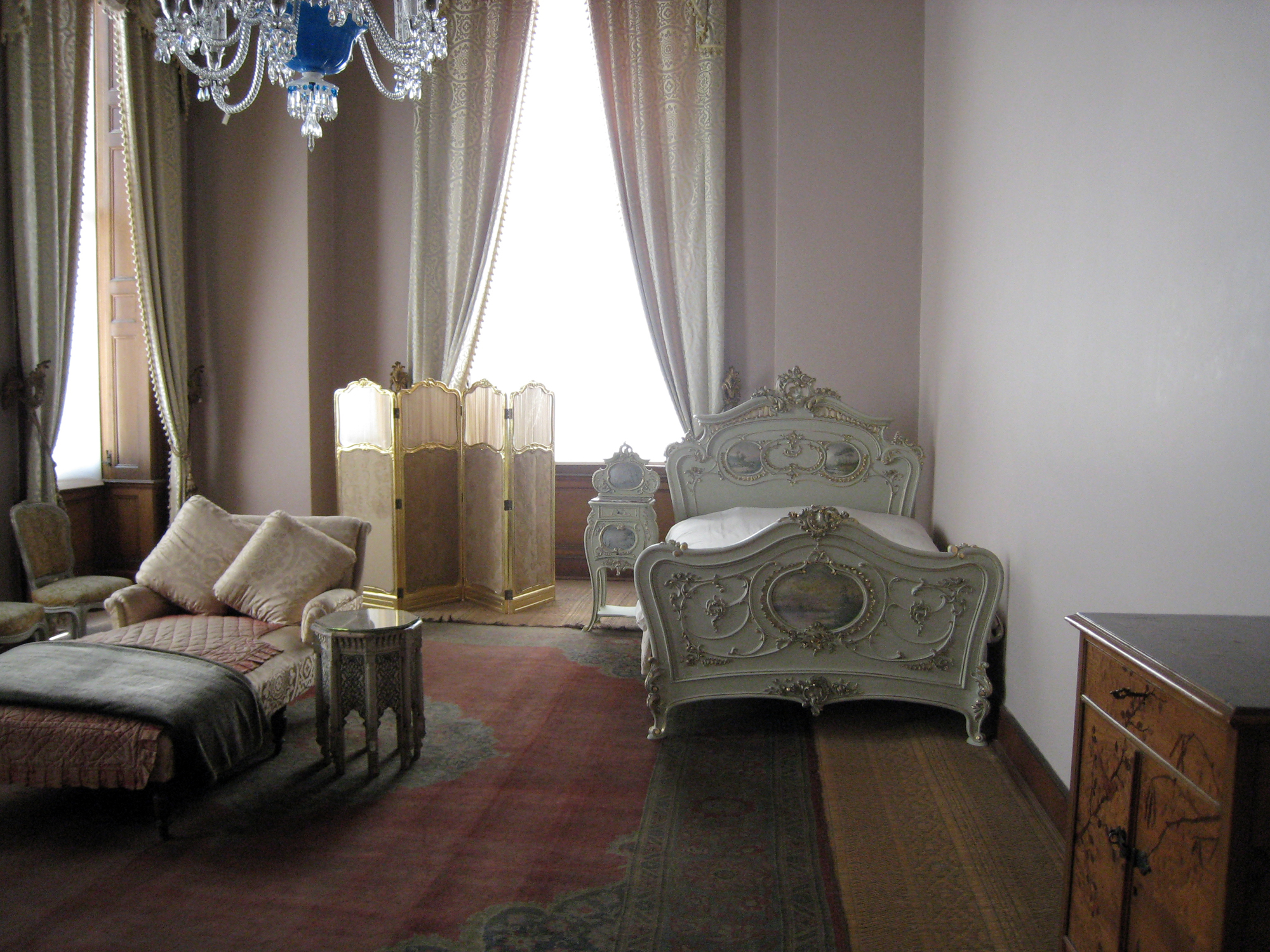Beylerbeyi Palace on:
[Wikipedia]
[Google]
[Amazon]


 The Beylerbeyi Palace ( tr, Beylerbeyi Sarayı, literally meaning ''the palace of the
The Beylerbeyi Palace ( tr, Beylerbeyi Sarayı, literally meaning ''the palace of the
File:Beylerbeyi Palace 8920.jpg, Beylerbeyi Palace Exterior view
File:Beylerbeyi Palace 8922.jpg, Beylerbeyi Palace Front with stairs
File:Beylerbeyi Palace 8929.jpg, Beylerbeyi Palace Stairs from aside
File:Beylerbeyi Palace 8911.jpg, Beylerbeyi Palace Bathing pavilion
File:Beylerbeyi Palace 8936.jpg, Beylerbeyi Palace Bathing pavilion
Directorate of National Palaces , Beylerbeyi Palace
{{Coord, 41.043, N, 29.040, E, display=title, source:dewiki Houses completed in 1865 Sarkis Balyan buildings Ottoman palaces in Istanbul Museums in Istanbul Bosphorus Baroque Revival architecture in Turkey Üsküdar Tourism in Istanbul Historic house museums in Turkey 1865 establishments in the Ottoman Empire


 The Beylerbeyi Palace ( tr, Beylerbeyi Sarayı, literally meaning ''the palace of the
The Beylerbeyi Palace ( tr, Beylerbeyi Sarayı, literally meaning ''the palace of the bey
Bey ( ota, بك, beğ, script=Arab, tr, bey, az, bəy, tk, beg, uz, бек, kz, би/бек, tt-Cyrl, бәк, translit=bäk, cjs, пий/пек, sq, beu/bej, sh, beg, fa, بیگ, beyg/, tg, бек, ar, بك, bak, gr, μπέης) is ...
of beys'') is located in the Beylerbeyi
Beylerbeyi is a neighborhood in the Üsküdar municipality of Istanbul, Turkey. It is located on the Asian shore of the Bosporus, to the north of the Bosphorus Bridge. It is bordered on the northeast by the neighborhood of Çengelköy, on the eas ...
neighbourhood of Üsküdar
Üsküdar () is a large and densely populated district of Istanbul, Turkey, on the Anatolian shore of the Bosphorus. It is bordered to the north by Beykoz, to the east by Ümraniye, to the southeast by Ataşehir and to the south by Kadıköy; w ...
district in Istanbul
Istanbul ( , ; tr, İstanbul ), formerly known as Constantinople ( grc-gre, Κωνσταντινούπολις; la, Constantinopolis), is the List of largest cities and towns in Turkey, largest city in Turkey, serving as the country's economic, ...
, Turkey, at the Asia
Asia (, ) is one of the world's most notable geographical regions, which is either considered a continent in its own right or a subcontinent of Eurasia, which shares the continental landmass of Afro-Eurasia with Africa. Asia covers an area ...
n side of the Bosphorus
The Bosporus Strait (; grc, Βόσπορος ; tr, İstanbul Boğazı 'Istanbul strait', colloquially ''Boğaz'') or Bosphorus Strait is a natural strait and an internationally significant waterway located in Istanbul in northwestern Tu ...
. An Imperial Ottoman summer residence built between 1861 and 1865, it is now situated immediately north of the first Bosphorus Bridge
The Bosphorus Bridge ( tr, Boğaziçi Köprüsü), known officially as the 15 July Martyrs Bridge ( tr, 15 Temmuz Şehitler Köprüsü) and unofficially as the First Bridge ( tr, Birinci Köprü), is one of the three suspension bridges spannin ...
. It was the last place where Sultan Abdulhamid II
Abdülhamid or Abdul Hamid II ( ota, عبد الحميد ثانی, Abd ül-Hamid-i Sani; tr, II. Abdülhamid; 21 September 1842 10 February 1918) was the sultan of the Ottoman Empire from 31 August 1876 to 27 April 1909, and the last sultan to ...
was under house arrest before his death in 1918.
History
Beylerbeyi Palace was commissioned by Sultan Abdülaziz (1830–1876) and built between 1861 and 1865 as a summer residence and a place to entertain visiting heads of state.Empress Eugénie
An emperor (from la, imperator, via fro, empereor) is a monarch, and usually the sovereign ruler of an empire or another type of imperial realm. Empress, the female equivalent, may indicate an emperor's wife ( empress consort), mother (empr ...
of France visited Beylerbeyi on her way to the opening of the Suez Canal
The Suez Canal ( arz, قَنَاةُ ٱلسُّوَيْسِ, ') is an artificial sea-level waterway in Egypt, connecting the Mediterranean Sea to the Red Sea through the Isthmus of Suez and dividing Africa and Asia. The long canal is a popular ...
in 1869. Empress Eugénie of France was so delighted by the elegance of the palace that she had a copy of the window in the guest room made for her bedroom in Tuileries Palace
The Tuileries Palace (french: Palais des Tuileries, ) was a royal and imperial palace in Paris which stood on the right bank of the River Seine, directly in front of the Louvre. It was the usual Parisian residence of most French monarchs, from ...
, in Paris.
Naser al-Din Shah Qajar
Naser al-Din Shah Qajar ( fa, ناصرالدینشاه قاجار; 16 July 1831 – 1 May 1896) was the fourth Shah of Qajar Iran from 5 September 1848 to 1 May 1896 when he was assassinated. He was the son of Mohammad Shah Qajar and Malek ...
of Iran
Iran, officially the Islamic Republic of Iran, and also called Persia, is a country located in Western Asia. It is bordered by Iraq and Turkey to the west, by Azerbaijan and Armenia to the northwest, by the Caspian Sea and Turkmeni ...
stayed in the palace while he was in Istanbul, back on his way from Exposition Universelle (1889)
The Exposition Universelle of 1889 () was a world's fair held in Paris, France, from 5 May to 31 October 1889. It was the fourth of eight expositions held in the city between 1855 and 1937. It attracted more than thirty-two million visitors. The ...
of France.
Other regal visitors to the palace included the Duke
Duke is a male title either of a monarch ruling over a duchy, or of a member of royalty, or nobility. As rulers, dukes are ranked below emperors, kings, grand princes, grand dukes, and sovereign princes. As royalty or nobility, they are ran ...
and Duchess of Windsor
Wallis, Duchess of Windsor (born Bessie Wallis Warfield, later Simpson; June 19, 1896 – April 24, 1986), was an American socialite and wife of the former King Edward VIII. Their intention to marry and her status as a divorcée caused a ...
.
The palace was the last place of captivity of the deposed sultan Abdulhamid II from 1912 until his death there in 1918.
Description
Designed in theSecond Empire Second Empire may refer to:
* Second British Empire, used by some historians to describe the British Empire after 1783
* Second Bulgarian Empire (1185–1396)
* Second French Empire (1852–1870)
** Second Empire architecture, an architectural styl ...
style by Sarkis Balyan
The Balyan family ( hy, Պալեաններ; tr, Balyan ailesi or ''Palyan ailesi'') was a prominent Armenian family in the Ottoman Empire consisting of court architects in the service of Ottoman sultans and other members of the Ottoman dyna ...
, Beylerbeyi Palace seems fairly restrained compared to the excesses of the earlier Dolmabahçe or Küçüksu palaces.
The palace looks its most attractive from the Bosphorus, from where its two bathing pavilions, one for the harem
Harem (Persian: حرمسرا ''haramsarā'', ar, حَرِيمٌ ''ḥarīm'', "a sacred inviolable place; harem; female members of the family") refers to domestic spaces that are reserved for the women of the house in a Muslim family. A hare ...
(women's only) and the other for the selamlik
The selamlik, selamlek or sélamlique ( tr, selamlık) was the portion of an Ottoman palace or house reserved for men; as contrasted with the seraglio, which is reserved for women and forbidden to men.
Selamlik was also a portion of the househol ...
(men's only), can best be seen. One of the most attractive rooms is the reception hall, which has a pool and fountain. Running water was popular in Ottoman houses for its pleasant sound and cooling effect in the heat.
Egyptian reed matting is used on the floor as a form of insulation. The crystal chandeliers are mostly French Baccarat and the carpets are from Hereke Hereke is a town in Kocaeli province, Turkey, located to the north of the Gulf of İzmit, near Istanbul. It is famous for Hereke carpets. It was bound to Gebze district until transferring to Körfez in 1987 and had municipality status until 2009. I ...
.
See also
* Beylerbeyi Palace Tunnel *Ottoman architecture
Ottoman architecture is the architectural style that developed under the Ottoman Empire. It first emerged in northwestern Anatolia in the late 13th century and developed from earlier Seljuk architecture, Seljuk Turkish architecture, with influen ...
Literature
* Hakan Gülsün. ''Beylerbeyi Palace''. TBMM. Istanbul, 1993.Gallery
External links
Directorate of National Palaces , Beylerbeyi Palace
{{Coord, 41.043, N, 29.040, E, display=title, source:dewiki Houses completed in 1865 Sarkis Balyan buildings Ottoman palaces in Istanbul Museums in Istanbul Bosphorus Baroque Revival architecture in Turkey Üsküdar Tourism in Istanbul Historic house museums in Turkey 1865 establishments in the Ottoman Empire